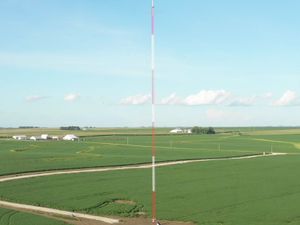Should you be excited about… the Huawei P20 Pro?
The world’s first triple rear camera smartphone wants to replace your iPhone or Samsung device.

Huawei has ambitions to be the biggest smartphone brand in the world and believes the way to do that is through photography and artificial intelligence.
In Paris this week, the Chinese firm unveiled its newest flagship device – the P20 Pro – which is big on better photos thanks to an industry-first triple rear camera system that Huawei promises delivers better images than users will find anywhere else.
But that’s a lot of power to put in the hands of consumers who might not be photography experts – so Huawei has also loaded the P20 with artificial intelligence, predominately wired into the camera, to serve as a virtual photo assistant to even the most technophobe user.
The result is a point-and-shoot experience that will delight even the most novice of snappers, but is a camera alone enough to warrant parting with £799?
Photogenic

In early use, the performance matches the impressive numbers, with the first shots we took being not only sharp but detailed and noticeably brighter than the iPhone X being used alongside it.
The AI in the camera includes the ability to automatically recognise a range of scenes – for example if you’re photographing food, greenery or general landscapes.

In short, it’s smart enough to know what it’s looking at and how to get the best from an image – even if it’s a quick photo when on the move thanks to the ability to intelligently stabilise photos.
The P20 Pro also boasts a 5x zoom, which is one of the biggest on any smartphone, but crucially image quality is hardly compromised, meaning zoomed images maintain clarity to an extent not seen elsewhere.

So far, perhaps the only yardstick where the P20 falls short of its rivals – the Samsung Galaxy S9 in particular – is in its slow motion feature.
On first inspection, the P20 Pro lacks the clever movement sensor that automatically starts capturing video on the S9. On the P20, users have to rely on their own instincts and that can be a lottery.
Design

The phablet-sized device houses a bright, 6.1-inch FullView OLED display that fills the majority of the front panel.
The highly reflective and polished rear panel also looks good – particularly in the blue and two-tone Twilight finish, even if it is hard to hide fingerprints and smears.
One small but crucial touch that also works is the layout of that rear panel, with a vertical line of lens and branding running down the left side of the device. This at least makes the P20 stand out from the metal and glass rectangle monotony that is much of the modern smartphone market.
The notch

The P20 has a narrower notch than the iPhone X, which Huawei says makes it a better piece of design as it leaves plenty of room either side to display the notification icons that are a common part of the Android operating system.
However, in practice this look is far less elegant than the minimal appearance on the iPhone X and even makes the top of the P20 screen look cramped.
Early verdict

However, it’s also striking that beyond the undoubtedly brilliant photo-taking abilities of the device there is little else to get excited about. There are few other features that merit praise or note, or that you can’t find on rival devices.
Though it should be noted that those rivals are the S9 and the iPhone X – the two phones at the top of the pile, so the P20 is doing something right.
More time with the phone will naturally reveal more about it – but it remains full of promise and potential. Now it needs to fulfil it during long-term use.





